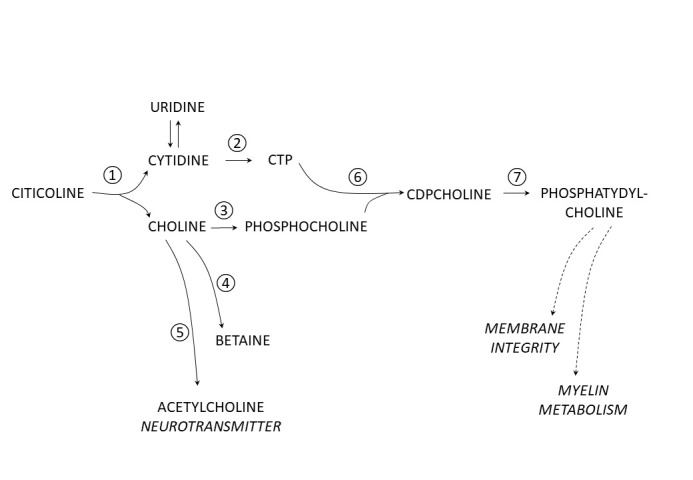Figure 1.

Major metabolic pathways of citicoline following ingestion. 1. Hydrolysis and dephosphorylation of citicoline occur in blood and yield choline and cytidine (in humans converted to uridine) that enter brain. 2. In the brain cytidine is activated by phosphorylation to cytidine-triphosphate (CTP). Choline, which concomitantly enters the brain, follows three major paths: 3. activation by phosphorylation to phosphocholine; 4. conversion to betaine (N,N,N-trimethylglycine); 5. conversion to acetylcholine (a neurotransmitter). 6. CTP and phosphocholine rejoin to yield CDP-choline, which 7. is used to synthesize phosphatidylcholine, utilized to support membrane integrity and myelin metabolism.
